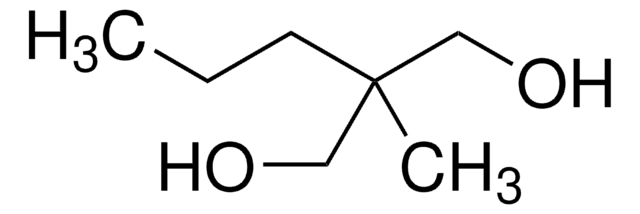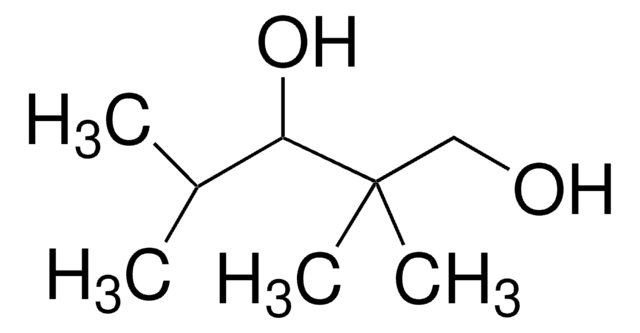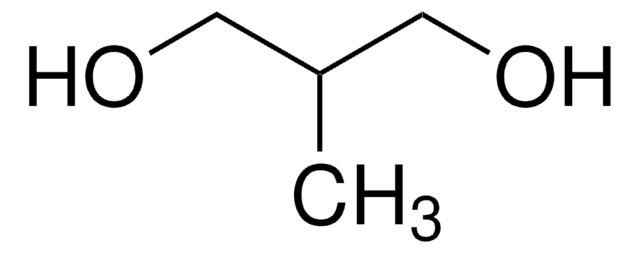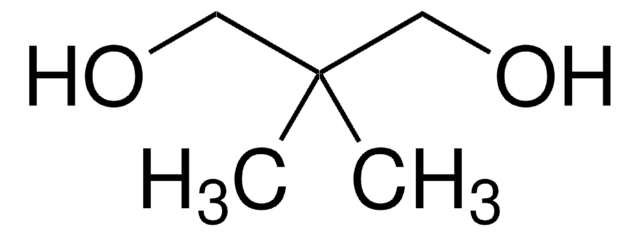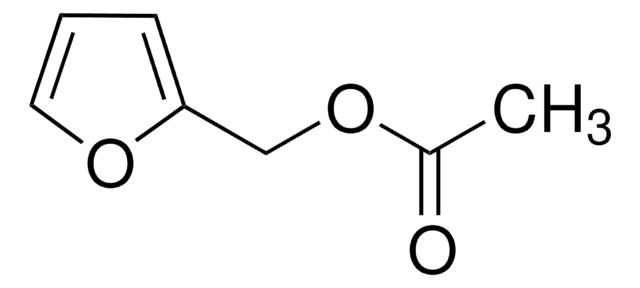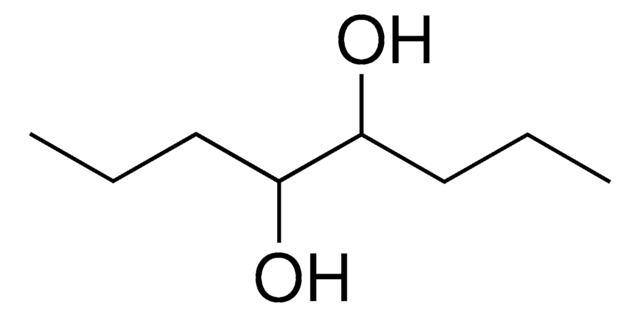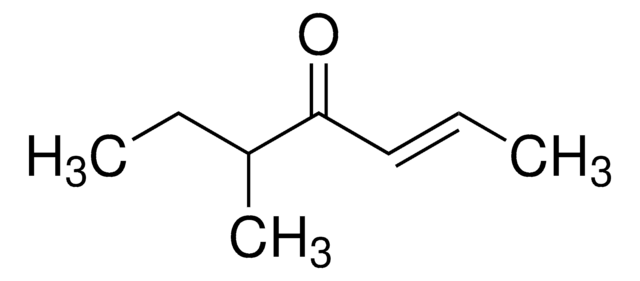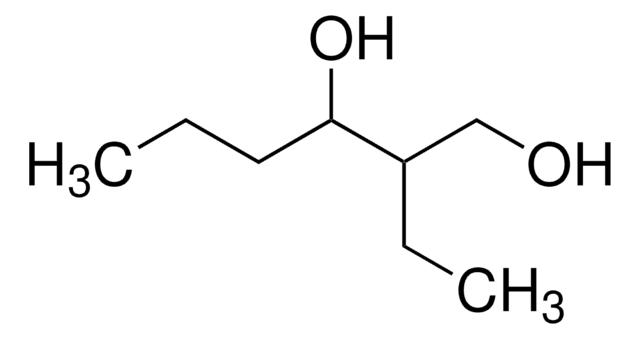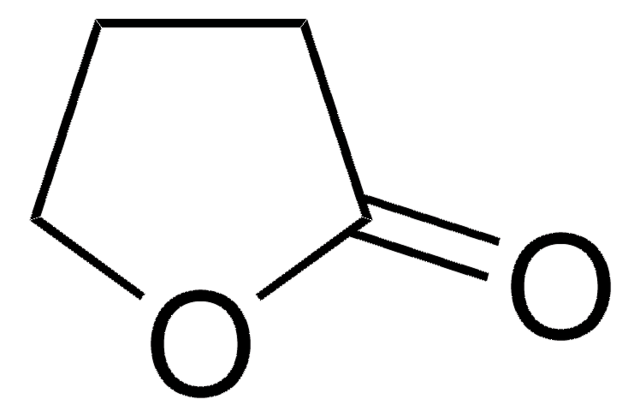All Photos(1)
About This Item
Linear Formula:
HOCH2C[(CH2)3CH3](C2H5)CH2OH
CAS Number:
Molecular Weight:
160.25
EC Number:
MDL number:
UNSPSC Code:
12352100
PubChem Substance ID:
NACRES:
NA.22
Recommended Products
Quality Level
Assay
99%
bp
178 °C/50 mmHg (lit.)
mp
41-44 °C (lit.)
functional group
hydroxyl
SMILES string
CCCCC(CC)(CO)CO
InChI
1S/C9H20O2/c1-3-5-6-9(4-2,7-10)8-11/h10-11H,3-8H2,1-2H3
InChI key
DSKYSDCYIODJPC-UHFFFAOYSA-N
Looking for similar products? Visit Product Comparison Guide
General description
2-Butyl-2-ethyl-1,3-propanediol undergoes bulk polycondensation with diacid monomer (terephthalic acid) to yield poly(ethylene terephthalate) copolymers.
Application
2-Butyl-2-ethyl-1,3-propanediol was used in the synthesis of polyesters.
Signal Word
Warning
Hazard Statements
Precautionary Statements
Hazard Classifications
Eye Irrit. 2
Storage Class Code
13 - Non Combustible Solids
WGK
WGK 1
Flash Point(F)
276.8 °F - closed cup
Flash Point(C)
136 °C - closed cup
Personal Protective Equipment
dust mask type N95 (US), Eyeshields, Gloves
Choose from one of the most recent versions:
Already Own This Product?
Find documentation for the products that you have recently purchased in the Document Library.
Olli Laine et al.
Analytical chemistry, 74(16), 4250-4258 (2002-08-30)
Polyesters prepared from the same diol, 2-butyl-2-ethyl-1,3-propanediol, but different phthalic acid isomers, phthalic, isophthalic, and terephthalic acid, were characterized by collision-induced dissociation electrospray ionization Fourier transform ion cyclotron resonance (CID-ESI-FT-ICR) and postsource-decay matrix-assisted laser desorption/ionization time-of-flight (PSD-MALDI-TOF) mass spectrometry. Sodiated
Structural characterization and thermal properties of poly (ethylene terephthalate) copolymers containing 2-butyl-2-ethyl-1, 3-propanediol.
Kint DPR, et al.
Journal of Applied Polymer Science, 86(5), 1077-1086 (2002)
Our team of scientists has experience in all areas of research including Life Science, Material Science, Chemical Synthesis, Chromatography, Analytical and many others.
Contact Technical Service